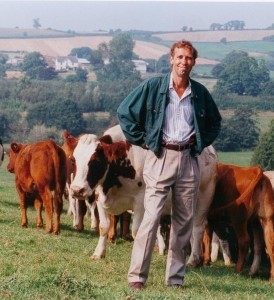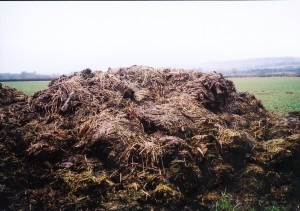Growing natural resilience: how can we learn from ecosystems
I talk about resilience a lot, and I hear very varied definitions of it from others. Some regard resilience as a hard, cold, mechanistic idea, whereas my first images are of a green, creative springiness: the growing through problems that we can see in sustainable ecosystems.
This blog offers my views on how humans can learn about natural resilience from ecosystems, drawing on my twenty-five years’ experience in managing two cultivated ecosystems: a 130-acre organic farm in Dorset, and a 70-acre woodland in Wiltshire.
Magdalen Farm and Hazel Hill wood are both residential centres where people can learn through contact with nature. The best insights don’t come from nature in the wild, but from cultivated ecosystems: managed to deliver targeted outputs in a sustainable way, which renews resources instead of depleting them.
Think about intensive or factory farming, where artificial stimulants (fertiliser) and suppressants (pesticides, antibiotics) are used to drive outputs, and the underlying resources are depleted and polluted. Now compare this to a typical work organisation….
My model, the Roots of Resilience, highlights eight features of cultivated ecosystems, and shows how these translate to people in work and life generally. One benefit of an ecosystem as a model is that is easy to embody as living, dynamic and intuitive, not as fixed or cerebral. Most of us have a deep felt connection with nature around us, so why not relate this to human nature?
The Roots of Resilience articulates the main principles of organic growth and shows how people can apply them. For example, here is Principle 3:
- The joy of crap: composting waste
The beauty of any natural cycle is that there is no waste: every output becomes the input to the next stage of the cycle. In a wood, dead leaves rot down to enrich the soil. Organic farms compost both animal manure and plant waste to create a major source of future fertility, and this is a key to renewing resources whilst increasing outputs.
Where is the waste in your life and work that has discarded energy and value? Think about negative feelings like anxiety, or conflicts and failures. It’s often easier to ignore the waste, but it builds up within us and around us. Waste is usually messy: it takes new skills to collect and recycle it, but it can be done. For example, negative feelings can become a source of fresh understanding and constructive energy: both for you personally and in your relations with others. For many people, a key resilience need is skills to handle increasing conflicts with other people. This is another example of composting: if conflicts are faced and processed, they can generate growth in a relationship, but this takes good skills, and may need support from a third party.
This model explores resources/inputs, processes/approaches, and outcomes/results. It offers a linked set of principles and methods useful for individuals, teams and whole organisations. The benefits include: strengthening and renewing your resources, better ways to handle setbacks, and fresh inputs of energy and insight.
An important feature of the model is the relationship between the forester/farmer/manager and the natural resources they are guiding. Here, for example, is a short description of Principle 5:
- Wisdom from Stillness and Tracker Vision.
If you spend time with organic farmers or foresters, you’ll notice a quiet, reflective quality alongside huge capacity for action. Their vision, strategy, and response to problems arise partly from listening to the land, or whatever natural resources are involved (for example, yourself). Foresters and farmers spend a lot of time alone on their land, walking it or just sitting still.
There are two crucial skills here: sitting with stillness, and ‘stalking the vision’. This relates to the way observation and tracking are taught in wilderness skills: you must learn to sit or walk in total silence, and to cultivate wide-angle vision, so that you can see what is peripheral. Tracker vision is invaluable for people in all walks of life. The skills of Mindfulness are another approach to this same topic.
The best way to get into this model is to experience it and actually feel yourself as part of the system, with a guided walk through a cultivated ecosystem, such as Hazel Hill Wood. This model will be the core of the weekend workshop on The Natural Roots of Resilience, which I am co-leading with Marcos Frangos at Hazel Hill wood, April 24-26. For further details of the weekend, click here.
The model is too long to reproduce in this blog, and it is better to experience it first: so come to the April 24-26 workshop!
For more about Hazel Hill Wood, see www.hazelhill.org.uk , YouTube
For more about Magdalen Farm, see www.magdalenfarm.org.uk
Alan’s book: The Natural Advantage: renewing yourself, inspired by his work at Magdalen Farm, which relates the principles and practises of organic growth from land to people and organisations, is out of print but can be obtained second-hand. See www.living-organically.com for a summary.


